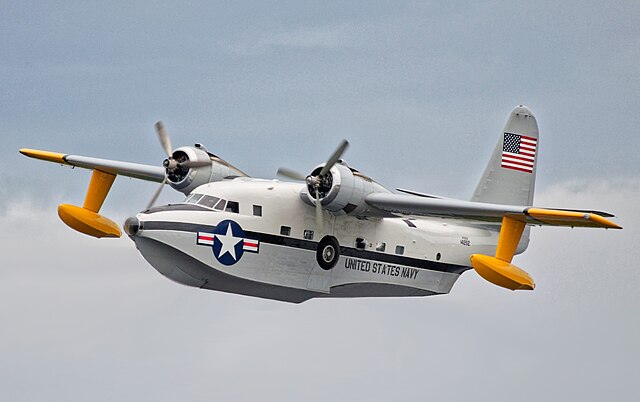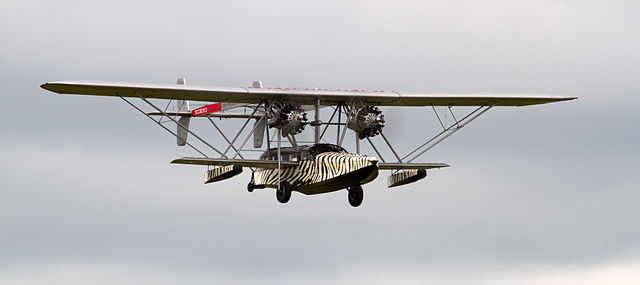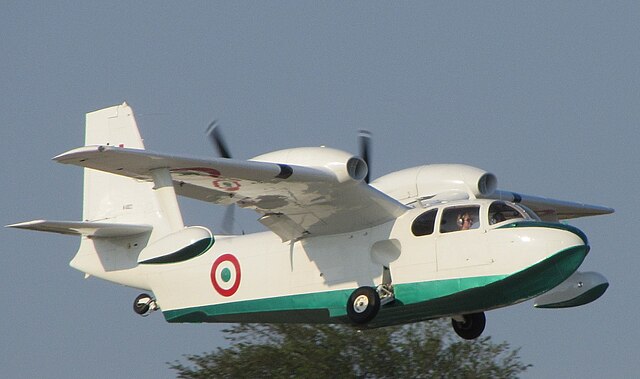The Grumman HU-16 Albatross is a large, twin–radial engined amphibious seaplane that was used by the United States Air Force (USAF), the U.S. Navy (USN), the U.S. Coast Guard (USCG), and the Royal Canadian Air Force primarily as a search and rescue (SAR) aircraft. Originally designated as the SA-16 for the USAF and the JR2F-1 and UF-1 for the USN and USCG, it was redesignated as the HU-16 in 1962. A new build G-111T Albatross with modern avionics and engines was proposed in 2021 with production in Australia to commence in 2025.
Grumman HU-16 Albatross
A USAF SA-16A during the Korean War
Grumman HU-16 Albatross at MacDill AFB Florida 1951 or early 1952
Chalk's International Airlines Albatross arriving in Miami Harbor from Nassau, Bahamas, in 1987
An amphibious aircraft or amphibian is an aircraft that can take off and land on both solid ground and water. They are typically fixed-wing, though amphibious helicopters do exist as well. Fixed-wing amphibious aircraft are seaplanes which are equipped with retractable wheels, at the expense of extra weight and complexity, plus diminished range and fuel economy compared to planes designed specifically for land-only or water-only operation. Some amphibians are fitted with reinforced keels which act as skis, allowing them to land on snow or ice with their wheels up.
A Canadair CL-415 amphibian with retractable wheels
Vickers Viking - an early amphibian.
replica of Osa's Ark - a Sikorsky S-38 used to explore Africa in the 1930s.
Italian Air Force Piaggio P.136 during takeoff retracting the wheels that make it an amphibian.








